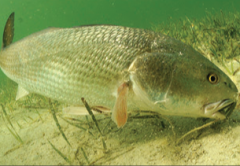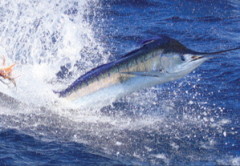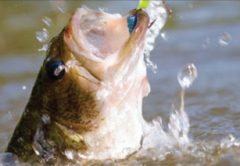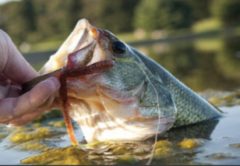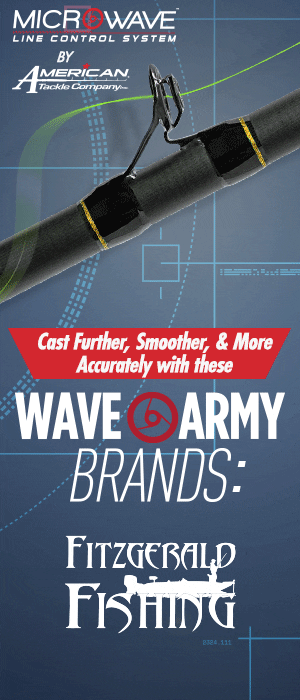By Phil Wolf, Co-Publisher Orlando Coastal Angler Magazine
A great friend and a well accomplished angler once said the best time to go fishing is when you can! The best time of year for catching bass comes and goes – But the month of March has always been magic for catching huge bass! March in Florida produces the years’ largest female bass because their weight is naturally increased by Mother Nature’s call to reproduce. Early spring offers the best chance for catching a “Trophy Bass”, 8lbs. or larger. The egg laying females begin their annual migration to the shallows following the smaller male ”Buck” bass, typically around the changing moon phases. The thinner, smaller and super aggressive males move into the shallows first – finding the best and most protected places to prepare their beds for the females to lay her eggs.
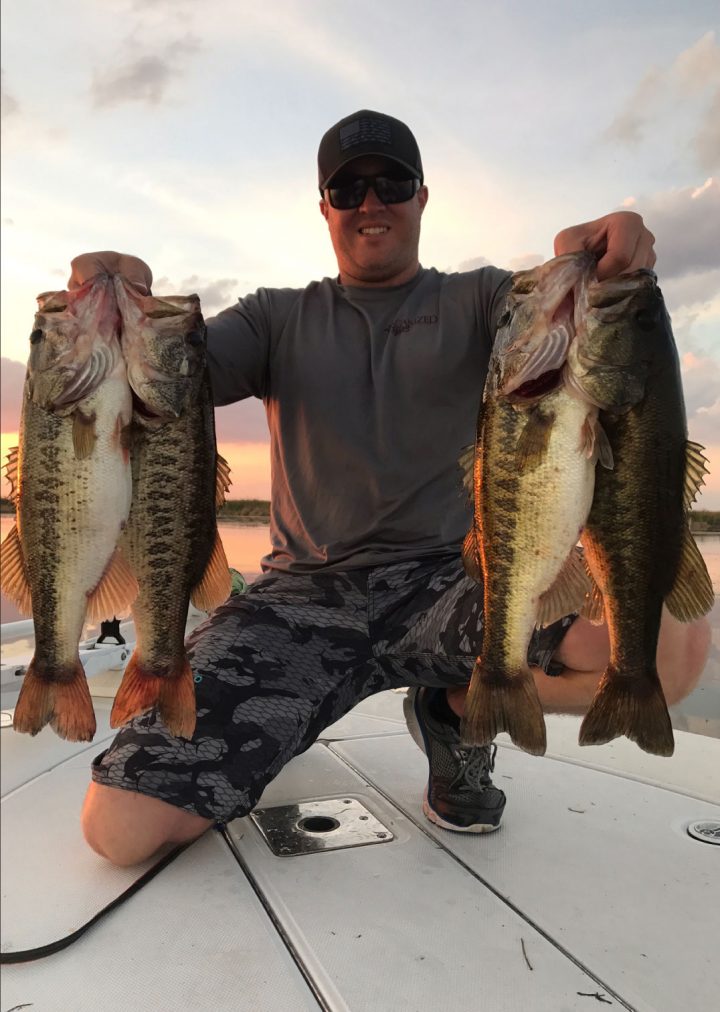
The spawning season lasts several months in Central Florida. The month of March is the peak month. The aggressive bites you get from buck bass will be some of the years’ best. In the cleaner shallow water, sight fishing for aggressive males and large females can be exciting but equally frustrating. The aggressive bucks will protect a prepared bed with their life. Once locked on the bed, the bucks will pick up your bait, remove it from its bed then spit the bait out – all while you watch, never even feeling the bite. A buck bass may remove the same bait multiple times off his bed before he gets mad enough to eat your presentation and a chance to hook him. A few days prior to, or just following the changing moon phase, the big bass move to the deeper water staging locations close to the bedding areas. This is when they will bite just about anything – more aggressively than any other time of year! In between the moon phases search baits like large 4” to 5” swim baits, plastic frog baits, top water poppers and fast moving chatter baits will get super aggressive strikes. As multiple bucks will be in the same areas, these bucks will compete with one another trying to grab a meal. When you see these aggressive fish pushing a wake and zooming in on a slow rolled swim bait, it is very hard not to set the hook before they can swallow your presentation. At no other time during the year will the fish fight harder or be happier to eat most any bait you present.
As you search your local lakes looking for the best bedding locations, look for areas most protected from the northeasterly winds. These areas will be the most protected and will warm up the fastest. Look for areas with hard, sandy and shell covered bottoms with the cleanest water you can find in shallow water of four feet or less. Find areas with scattered vegetation like Kissimmee grass, cattails, hard reeds or buggy whips, thin lily pads both large and small with deeper water and heavier vegetation close by. The areas on the lakes most protected or to the north-side will warm-up the fastest as the winds will push the cooler water towards the southern lake areas. Having a good pair of polarized sunglasses is a must. As you spot existing beds in the shallows or smaller buck bass moving about in these areas, you can bet the larger females are close by. On days between the moon phases fish the thicker cover adjacent to the beds you see or close to these spawning areas. The larger females will be waiting for Mother Natures’ time clock which will move them into the bedding areas where the bucks are hard at work prior to their arrival. Flipping or pitching heavy weighted creature baits in the holes and pockets of the densest grass or mats will produce rod jarring bites. The egg bearing females are heaviest at this time of year. A normal female 8 pound bass will be 2 to 3 pounds heavier at this time due to feeding aggressively and the weight of the eggs they carry.
To help protect these egg carriers and insure future largemouth fish stocks, please take great care when handling large bass. Make sure to remove the hook quickly and return the fish to the water; try to keep the fish out of the water only as long as you can hold your breath. Upon reviving the fish get your camera and measuring tape ready, position the boat for a good photo. Then take the fish out of the water for photos, remember only hold them out as long as you can hold your breath. Measure the fish and release it to finish its spawning cycle and fight another day. At no time of year are these large females more vulnerable to death due to miss handling of caught fish. Please help make the practice of catch-photorelease the norm for these large females and pass on what you learn to other anglers and to your children. The best chance of catching a “Trophy Bass” of your lifetime is during the spring-time spawn, so get out there…Tight lines and good luck!



